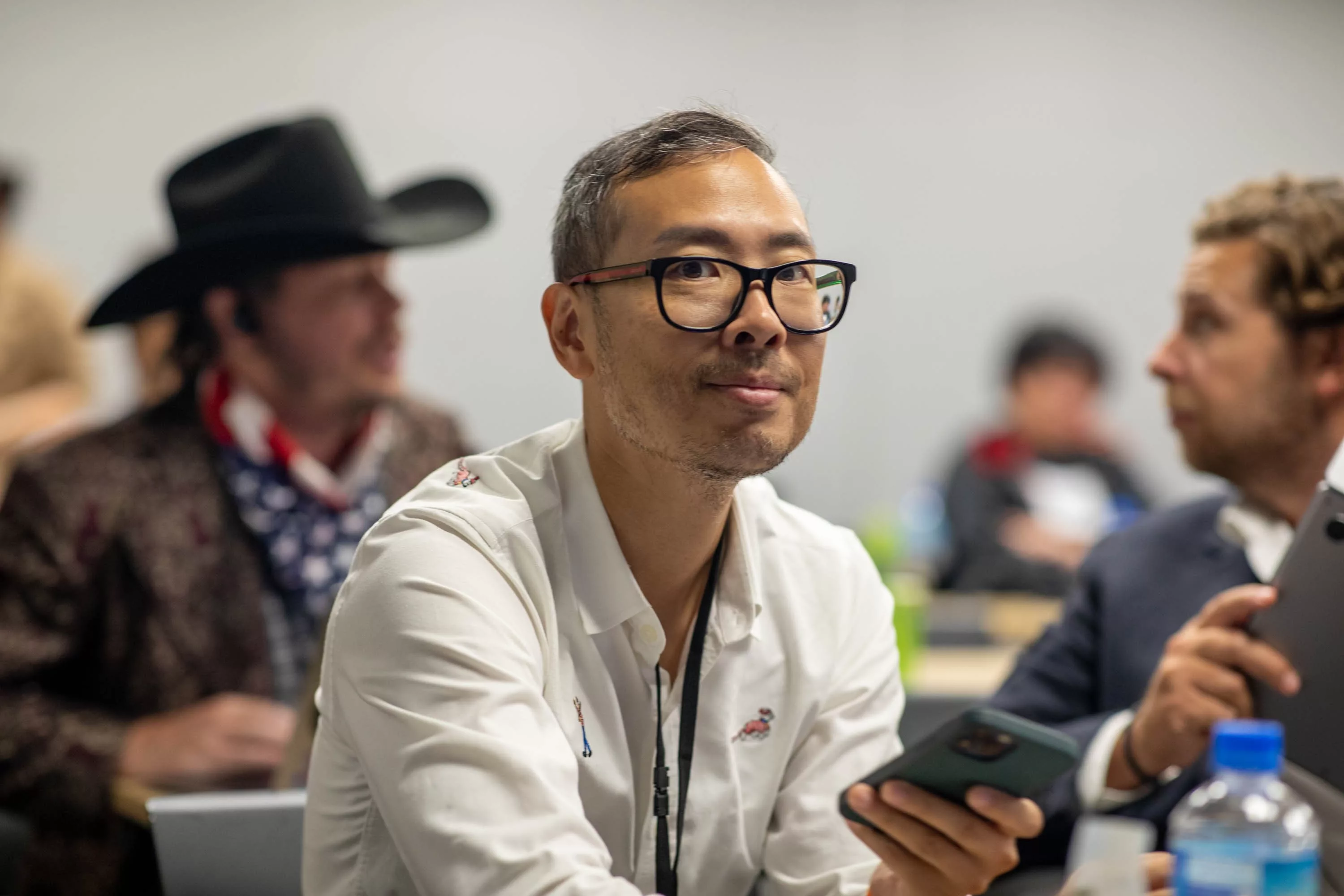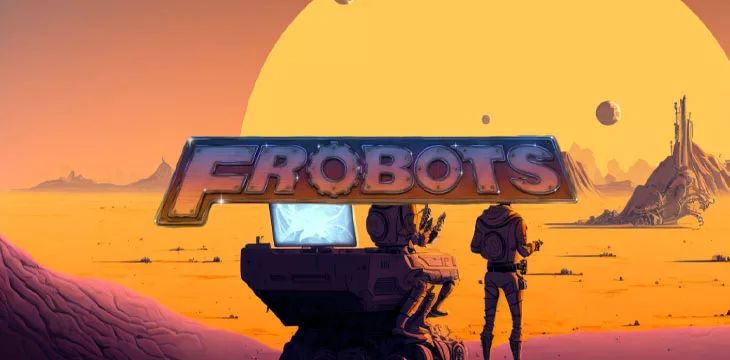|
Getting your Trinity Audio player ready...
|
Frobots, the BSV blockchain-based battle game where players create and improve their own character, is nearing the end of a two-month beta test.
CoinGeek spoke to creator Jerry Chan about his experiences during the test period and the improvements he and his team intend to make in preparation for a public release.
The game is designed to be a learning experience as much as it’s designed to be fun. In fact, you can’t actually play Frobots without educating yourself, as characters must be built from scratch using the Lua programming language or by piecing together Frobots’ pre-set code blocks. It’s similar to other educational programming experiences like Scratch, or (going back a few decades) the Logo/Turtle language Chan and others of his generation used in school.
Speaking in Tokyo on September 26, Chan said online multiplayer games “have become anti-gamer,” with monetization features creating perverse incentives to play the games, and degrading the experience overall. Frobots, he said, aims to encourage a competitive spirit while sticking to its original purpose of promoting learning.

Basically, “you write a program that fights other programs,” he said, evoking memories of the classic sci-fi movie TRON.
Users create a Frobot and improve it over time as their programming skills increase. There won’t be a limit to the number of game characters a player can create, and Chan envisages players managing their collection “like a sports team,” sending them into battles together. Characters and assets users create are tokenized as non-fungible tokens (NFTs), with the possibility for them to exist outside the game.
“I want to build a microcosm of an economy, not just a product,” he said. Frobots’ in-game currency (called “sparks”) is not tradeable outside the game environment. Players earn and win sparks depending on their characters’ battle results, which they can use to build more characters, improve existing ones, or create other in-game items.
As well as making the game more user-friendly with guides and tutorials, Frobots is looking at other ways to attract new players, potentially offering real-money prizes for in-game tournaments. Read our interview with Jerry Chan below for more details and find out how to get involved.
How long will the current beta run?
Jerry Chan: Until the end of September, likely. What we want to do is to run the beta until we do, including the first Shatterdrom tournament. That way, we can test out all the fundamental engagement types for the platform.
How many people are working on Frobots (developers, designers, including yourself)?
Jerry Chan: There are five of us, with a couple of others who help out when they have spare cycles.
What have you learned from your beta testers so far?
Jerry Chan: The beta test so far has been very informative. We have a group of great users who thoroughly went through the platform and pressed all the buttons, and pulled all the levers, which was very instrumental in helping us find out what the points of improvement needed to be.
One of these big pain points was that the initial learning curve for figuring out what to do in programming a Frobot for the first time was pretty steep. In fact, it was more of a brick wall, unless you are already a programmer. In fact, even if you are a programmer, it was a bit difficult because you needed to learn where all the blocks are and that match up with all the normal programming constructs that you would normally be familiar with.
The biggest request, therefore, was some sort of tutorial or some other mechanism that would allow the users to get up to speed and hit the ground running with a working Frobot as soon as possible. As a result of this feedback, our team has been working on some features to address these learning curve issues, in the form of better tooltip guidance, default Frobot block code for new Frobots, and also a way to save blockly code snippets to be re-used between Frobots so as to eliminate the need to re-create useful functions that a player might have already created for one Frobot, and would like to use it in another. We hope to have these improvements rolled out very soon. In fact, some have already been released.
What prior knowledge/experience do you need to have to test/play the game?
Jerry Chan: Currently, the game is best for those who have at least some minimal understanding of computer programming, basic conditional statements, comparisons, setting variables, and the like. As a Frobot needn’t do much. In terms of looping or repetition, it is quite easy to program once one gets their head around the idea of a finite state machine, which is just a function which checks what the current state is, checks some external information, does a bit of calculation, and then sets the state to something else. I’d say that the skills required to create a Frobot is somewhat at the level of someone with some familiarity with programming scratch.io or Lego blocks. It’s the same sort of procedural sort of check state->do stuff->set new state->repeat sort of sequence.
I confess I haven’t made it to an actual match yet—what’s the interface like for the gameplay? (e.g., does it look like a battle game, like CryptoFights? Or text-based?)
Jerry Chan: If you create a Frobot, you can open a match and just add some probots to the open slots; then the match will run. The matches are non-interactive, and you just watch what your Frobot and the opponents do as they battle. It’s best described as a top-down view, like TRON, the original 2D arcade game. Eventually, we’d like to make the match rendering into something more engaging with modern game engines, but as it is most important for the creators of a Frobot to be able to see a bird’s eye view of exactly what it is doing so that they can continue to improve it, this view is the most practical and essential.
Are beta games recorded on the BSV blockchain?
Jerry Chan: We intend to eventually put records of the matches onto the blockchain, but they are currently just stored on our platform. We want to ensure that when we do release records of the matches to the blockchain that there is sufficient support for third-party viewers for the matches so that people can actually make good use of them.
Will players be able to take Frobots from the beta into the final version, or will they need to start over?
Jerry Chan: Absolutely, yes! In fact, all the Frobots that are created as part of the beta will retain all of their code and experience points and be playable post-beta, and we may even grant them special prestige gear or badges to mark their participation in the beta, permanently marking them as such. As an NFT, that may factor into the value of the Frobot itself as a collectible.
Who’s your target demographic for this?
Jerry Chan: When I set off on Frobots, I wanted to target all newcomers to programming, and as such, there is a lot of variance in age groups. Generally speaking, though, these tend to be people aged 14+. In terms of type of audience, I’d say Frobots aims to appeal to more the strategic board gamers than the typical computer gamer, which tend to enjoy first-person shooter or games based more on hand-eye coordination, reflexes, and muscle memory. Frobots is more strategic, analytical, and a game for builders.
What’s your estimated date for the public release?
Jerry Chan: So far, we are planning to run our first ‘Shatterdrom’ in September or October, and the public release will follow after that. Shatterdrom is what I’m terming the ‘Wrestlemania’ of Frobots, where we will pit all participants against each other to see which Frobot is the winner of the Shatterdrom.
If anyone is looking to join the project in some capacity, what skillsets are you looking for?
Jerry Chan: Anyone passionate about computer programming, distributed systems, or computer game programming. Some experience in Unity or modern game engines would be helpful. We are looking for people to help change the way people teach and learn how to program, and to make competitive coding fun!
Watch Frobots: Compete to see who can write the best code

 12-26-2025
12-26-2025 




